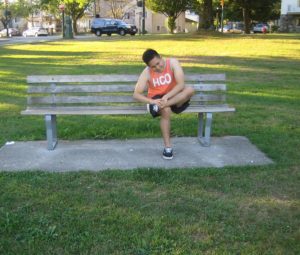An ankle sprain is one of the common forms of musculoskeletal injuries. The injury is common in sports but can also occur during daily activities. The unnatural twisting movement of the ankle joint occurs if the foot is planted in an awkward manner, when the ground is uneven or if an unusual amount of force is placed on the joint.
What are the indications?
Damage to the tissues and inflammation occur if an individual has an ankle sprain. The blood vessels start to leak and allow fluid to seep into the soft tissues that surround the joint. The white blood cells that trigger inflammation move into the area which causes an increase in the blood flow.
- Swelling that can be severe
- Pain that can worsen if the sore area is pressed or if the foot is moved in certain directions and while walking or standing.
- Warmth and redness
Pain that can worsen if the sore area is pressed or if the foot is moved in certain directions and while walking or standing.
When should I seek medical care
In most cases, an ankle sprain will not require a visit to the doctor. The concern is how to differentiate a sprain from a serious injury such as a fracture. If any of the following are present, a doctor should be consulted:
- Uncontrollable pain despite using over-the-counter pain medications, application of ice or elevation.
- Affected ankle does not improve within 5-7 days.
Home remedies for an ankle sprain
These measures can help reduce the pain and promote healing. Since the pain is due to inflammation, the objective is to reduce and prevent inflammation. The commonly used treatment is the RICE method.
- Rest aims on preventing further injury and avoid strain on the already inflamed tissue. A splint or brace is placed to allow the joint to rest. For severe cases, crutches are used.
- Ice is the ideal treatment that reduces the pain. The cold works by counteracting the increased blood flow to the injured area by reducing the redness, swelling and warmth. If applied early, it prevents the inflammation from getting worse.
- Compression provides support and prevents inflammation. An elastic wrap is typically used to immobilize the ankle. Just make sure that it is not wrapped too tightly.
- Elevation promotes the absorption of fluid that leaked into the tissue. The ankle should be propped to a height above the level of the heart.
- Anti-inflammatory pain medications such as ibuprofen can be given to reduce the pain and swelling.
More Information / Disclaimer
The information posted on this page on an ankle sprain is for learning purposes only. Learn to recognize and manage sprains including in the ankle by taking a standard first aid course with Mississauga First Aid.


